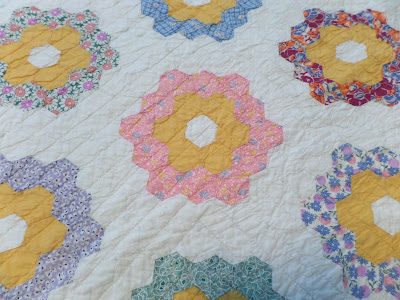Last week, my husband I took our dog to one of our favorite parks in a nearby city. The park features a waterfall and wide creek; my husband was pleased to see some fly fisherman casting along the waterway. "Let me explain this to you..." he said to me. I'm not a fly fisherman like he is and it was fascinating to hear how the "fly guys" choose where they want to position themselves. My husband concluded this lengthy discourse by telling me, "this is what we call reading the stream."
Quite often we find that scrap quilts have fabrics from a variety of decades. We date the quilt from the most modern fabric but indicated that the maker had "a deep scrap bag." I was curious if I could find a photo of an antique "scrap bag." I was unsuccessful but I did find an interesting article in the paper.
This was published in 1912 and must have been a popular idea because it was reprinted in a variety of newspapers. It reminded me of the thread catchers that are so popular right now. I free tutorial to make one is here.
In England a similar problem must have faced women in 1912. The suggestion I found there was to tack a bag directly to the machine (obviously because the machine was housed on wood).
Of course one could always BUY a scrap bag like this advertisement suggested in 1908:
I didn't know these bags were used as scraps as well! I had one in my old and spacious apartment and kept my embroidery in it. Do you use one?
Have a safe and happy day!





My mother had one of those 'scrap bags' that had metal legs. She used it to keep her crocheting in. She crocheted a lot of afghans.
ReplyDelete